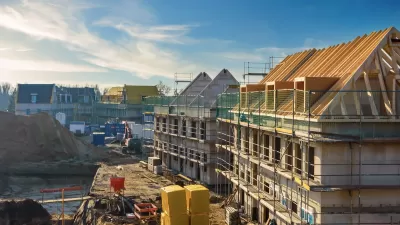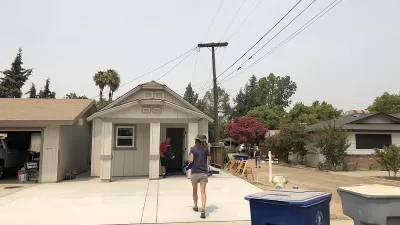Compact infill development can create affordable, inclusive and attractive cities, like Montreal, "plus belle ville au monde."
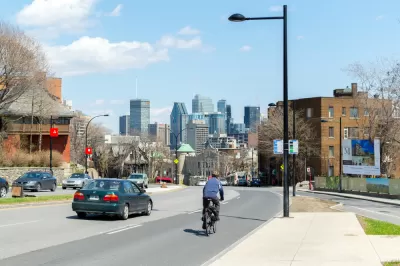
Planning is challenging but rewarding because it often involves new issues and perspectives. For example, when analyzing urban unaffordability and inequity problems, some of my friends like to apply Marxist analysis: they want to blame rich foreigners, Big Finance, and global corporations for driving up housing prices and squeezing lower-income families out of attractive and economically successful neighborhoods. This video, titled Push, is an example. It argues that housing problems are caused by "fiscalization," and should be solved by declaring housing a human right.
I am perfectly happy with such declarations, provided that the resulting policies are based on solid planning and economic theory. However, ideological-based critiques seldom provide guidance for practical solutions. I am particularly concerned that they perpetuate the idea that unaffordability and inequity are primarily caused by nefarious outside forces, which distracts us from considering how local policies affect affordability, inclusivity and economic opportunity.
Blaming investors confuses cause and effect. Housing only earns excessive profits if it is artificially scarce, that is, if markets cannot respond to increased demand. If the number of people who want to live in a community increases by, say 30%, efficient and equitable development policies would allow densities to increase by 30% to accommodate that growth. Otherwise, wealthier households will outbid poorer households for the limited number of units, driving up prices, which makes housing an attractive investment for speculation. Increasing allowable densities drives down housing prices.
|
Eliminating parking minimums also helps increase affordability, and reduces traffic problems that are the main objection that existing residents have to infill. Eliminating parking minimums does not eliminate off-street parking, it simply allows developers to determine how many parking spaces to provide based on market demand. This results in parking unbundling, parking rented separately from housing, so instead of paying $2,000 per month for an apartment with one off-street parking space, occupants pay $1,800 per month for the apartment and $200 per month for each parking space. This typically reduces housing rents by 10-20%, particularly for lower-priced apartments in areas with high land values, and no longer forces car-free households to pay for costly parking facilities that they don't need.
Smart Growth responds to changing consumer demands. If you ask people to describe their preferred housing type, most (typically 80%) will choose single-family homes, but if you ask them to make realistic trade-offs between housing and neighborhood attributes, more than half of respondents in the National Association of Realtor's 2017 Community Preference Survey said they would prefer to live in an apartment or townhouse rather than a detached house if it is located in a walkable and accessible neighborhood. Described differently, most people's housing needs vary during the course of their lives: they want cheap rental apartments when young adults, single-family or townhomes while raising a family, and apartments or condominiums when retired. Diverse housing serves these diverse needs.
Planners now use the term 15-minute neighborhood to describe a neighborhood where most commonly-used services, such as an elementary school, a local commercial center with a grocery store and restaurants, frequent public transit services, and local parks. According to my article, "Determining Optimal Urban Expansion, Population and Vehicle Density, and Housing Types for Rapidly Growing Cities," maintaining these services typically requires 20-40 residents per hectare, which is equivalent to 2,000-4,000 housing units per square mile, which is easy to achieve with a combination of small-lot single-family, townhouses and low-rise apartments. Smart Growth can provide the best of all worlds, affordable housing in walkable, accessible neighborhoods.
My previous columns, "How Filtering Increases Housing Affordability" and "Don't Miss the Middle: The Critical Role of Moderate-Priced Housing to Affordability" summarize extensive academic evidence indicating that allowing more compact, infill development tends to increase affordability in addition to other benefits.
However, many people are skeptical. They point to examples in which a particular parcel is upzoned but the resulting homes are expensive. However, this misses the point. To moderate prices it is necessary to upzone large areas in order to create a competitive market for developable land. A typical residential parcel will be sold about once a decade, so if a city wants 10 infill projects annually in a neighborhood, that area needs at least 300 upzoned parcels, so each year there are at least 30 parcels already pre-zoned to the desired density, resulting in three suitable parcels for each project desired. That competition moderates land price inflation allowing developers to find affordable parcels suitable for infill: a single-family home that can be replaced by three or four townhouses; two or three single-family parcels that can be replaced by a ten- or twenty-unit apartment building; or a two-story apartment that can be replaced with a four or five story mixed-use development.
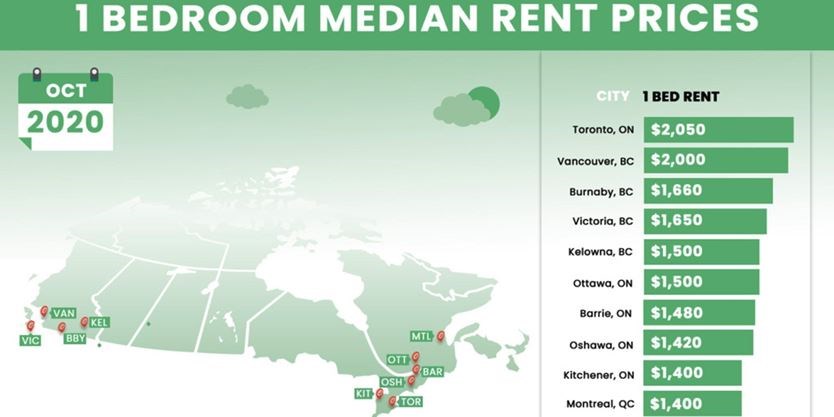
Montreal rental prices are 30% lower than peer cities such as Toronto and Vancouver despite it being economically successful and un belle ville au monde (one of the world's most beautiful cities).
Why is Montreal so affordable? Canadian cities all face the same global market pressures, but they vary significantly in their local development policies. According to A Visual Guide to Detached House Zones in 5 Canadian Cities, Montreal allows multifamily housing on 54% of its residential land, about twice as much as comparable cities, as illustrated below. The city also eliminated parking minimums.
A Visual Guide to Detached House Zones in 5 Canadian Cities
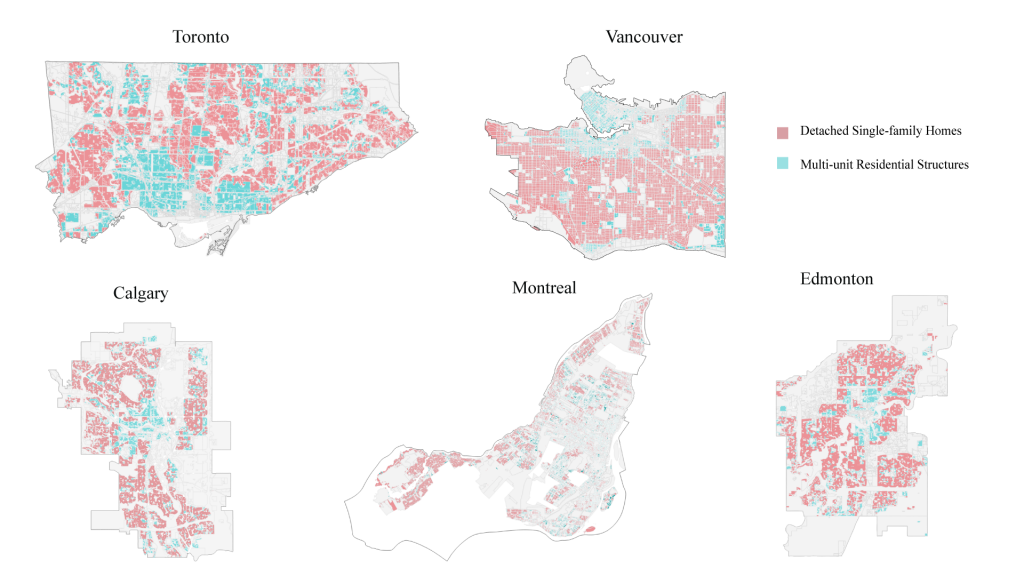
Montreal allows multifamily housing on about twice as much land as comparable Canadian cities, and eliminated parking requirements in central neighborhoods. This helps explains why it is attractive, economically successful and affordable too.
As a result of these flexible development policies, central Montreal neighborhoods are full of missing middle housing types, townhouses and low-rise apartment building, which creates an abundant, competitive market for inexpensive homes. These neighborhoods are compact and mixed, very walkable, and well served by public transit, which makes them truly affordable for both housing and transportation.
Compact development also reduces environmental impacts. Compact infill consumes much less land per capita, particularly if it reduces vehicle ownership and therefore the amount of land that must be paved for roads and parking facilities, and it greatly reduces pollution emissions. The figure below shows a map produced by the environmental group, Green Resilience, based on analysis of the differences in emissions between walkable and sprawled neighborhoods. Compact neighborhood residents typically produce 30-60% lower emissions than the same households types would produce living in single-family houses located in conventional, automobile-oriented suburbs.
Car-oriented Sprawl Increases Driving and GHGs in Greater Montreal
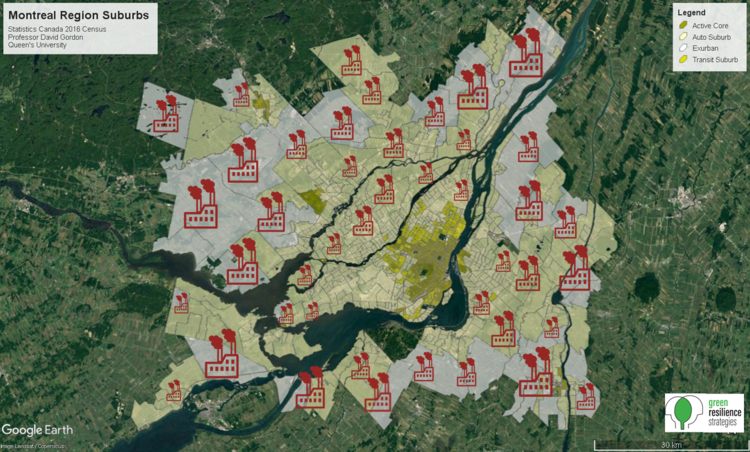
Residents of central Montreal neighborhoods drive only about one-third of the regional average, providing financial savings and environmental benefits.
Because it is accessible, affordable and efficient, Montreal is an exciting, creative and integrated city. It has a dynamic art scene, fantastic food and music, great theater and music, incredible cultural diversity, plus plenty of innovation and business. There's something for everybody, and newcomers are always welcome. The key is to this success is building lots of moderate-priced housing in walkable urban neighborhoods.
This is very good news for anybody who cares about affordability, economic opportunity, and joie de vivre ("love of life"). C'est bon!

Study: Maui’s Plan to Convert Vacation Rentals to Long-Term Housing Could Cause Nearly $1 Billion Economic Loss
The plan would reduce visitor accommodation by 25,% resulting in 1,900 jobs lost.

North Texas Transit Leaders Tout Benefits of TOD for Growing Region
At a summit focused on transit-oriented development, policymakers discussed how North Texas’ expanded light rail system can serve as a tool for economic growth.

Using Old Oil and Gas Wells for Green Energy Storage
Penn State researchers have found that repurposing abandoned oil and gas wells for geothermal-assisted compressed-air energy storage can boost efficiency, reduce environmental risks, and support clean energy and job transitions.

From Blight to Benefit: Early Results From California’s Equitable Cleanup Program
The Equitable Community Revitalization Grant (ECRG) program is reshaping brownfield redevelopment by prioritizing projects in low-income and environmental justice communities, emphasizing equity, transparency, and community benefits.

Planting Relief: Tackling Las Vegas Heat One Tree at a Time
Nevada Plants, a Las Vegas-based nonprofit, is combating the city’s extreme urban heat by giving away trees to residents in underserved neighborhoods, promoting shade, sustainability, and community health.

How Madison’s Tree Planting Efforts Are Growing a Healthier Community
Madison’s annual tree planting initiative is enhancing environmental resilience, public health, and community livability by adding 1,400 carefully selected trees citywide, with strong community and institutional support for urban forestry.
Urban Design for Planners 1: Software Tools
This six-course series explores essential urban design concepts using open source software and equips planners with the tools they need to participate fully in the urban design process.
Planning for Universal Design
Learn the tools for implementing Universal Design in planning regulations.
Ascent Environmental
Borough of Carlisle
Institute for Housing and Urban Development Studies (IHS)
City of Grandview
Harvard GSD Executive Education
Toledo-Lucas County Plan Commissions
Salt Lake City
NYU Wagner Graduate School of Public Service




























